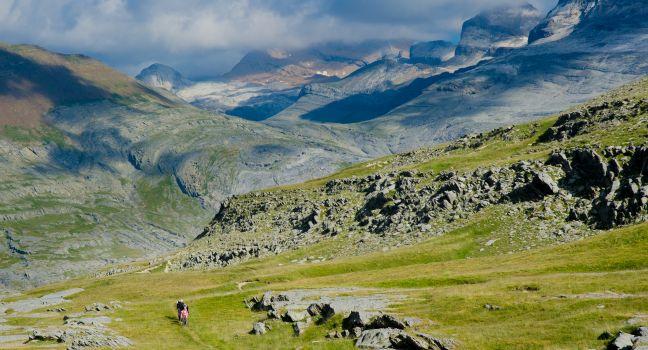Ordesa and Monte Perdido National Park

Welcome to the wildest, most unspoiled corner of the Pyrenees. The three main valleys of this national park—Ordesa, Pineta, and Añisclo—are carved out by the Ara River and its tributaries, the Arazas. They culminate in the majestic massif of Monte Perdido, which stands at 11,000 feet on the Franco-Spanish border; it's the highest of the park's three main mountains. The remote yet worthwhile valley of Las Gargantas de Escuaín is famous for its dolmen and soaring rock walls. Throughout the park, you'll find lakes, waterfalls, high mountain meadows, and forests of pine, fir, larch, beech, and poplar. Protected wildlife includes trout, boar, chamois, lammergeier, and the sarrio mountain goat (Rupicapra pyrenaica).
Well-marked mountain trails lead to waterfalls, caves, and spectacular observation points. The Cola de Caballo, for example, is 5-6 hours roundtrip route to one of those majestic waterfalls. From mid July to mid September, the town of Torla offers a shuttle service every 15 minutes to the trailhead in Pradera de Ordesa to manage overcrowded parking.



